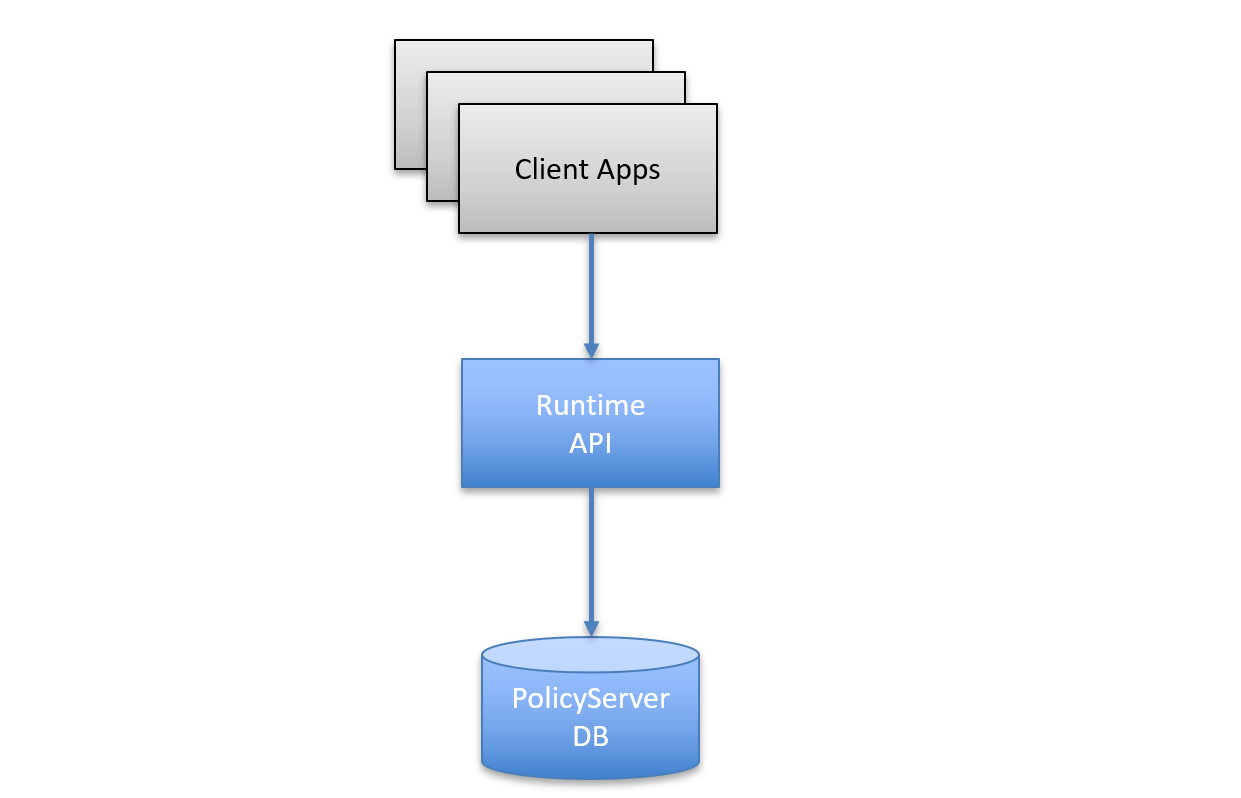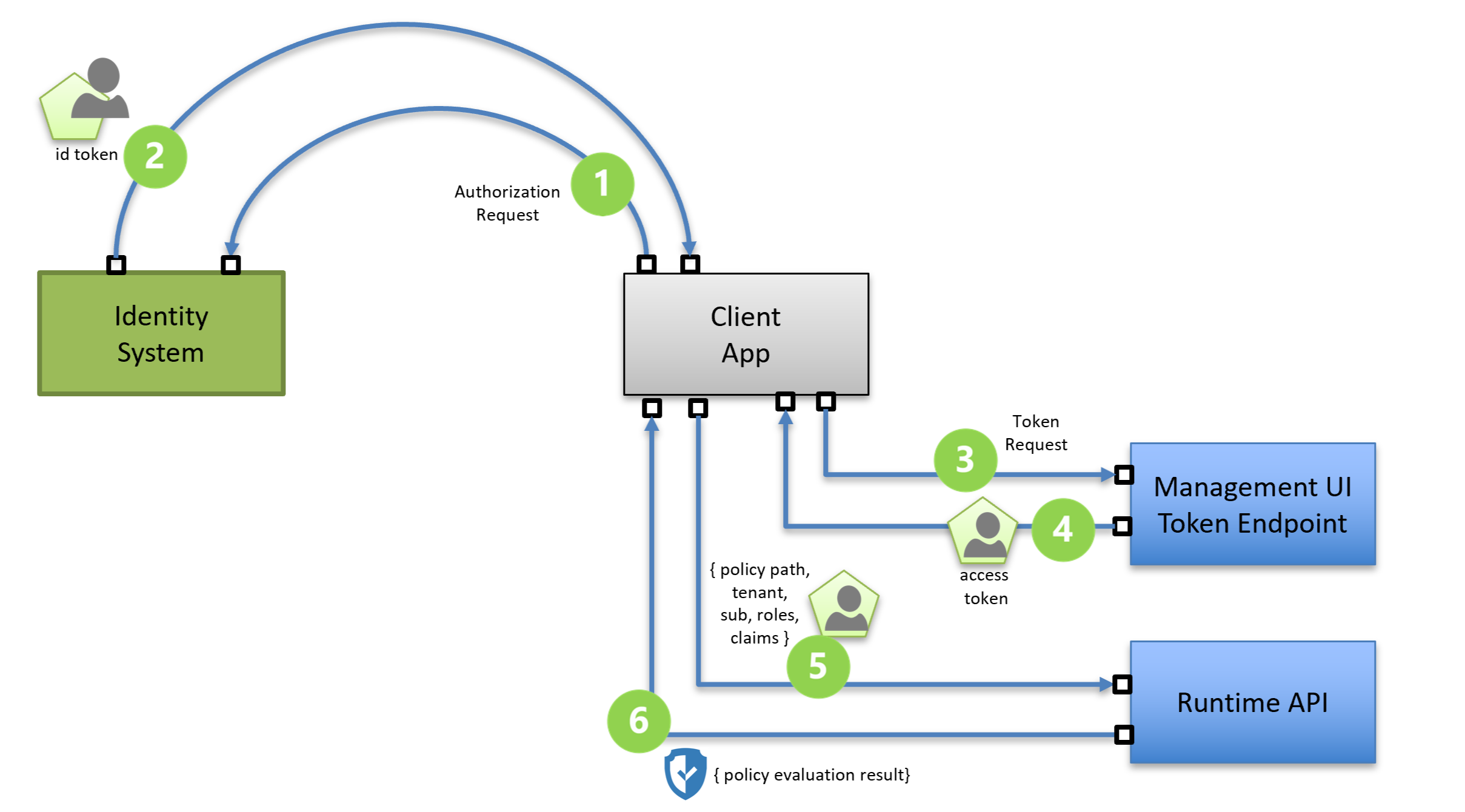Runtime API Overview
Applications connect to the PolicyServer Runtime API to evaluate policy for authenticated users.

Integration Workflow
Typically the application integration workflow follows these steps:
Authenticate the user
Request an access token from the PolicyServer token endpoint
Call the Runtime API passing the access token and information required for policy evaluation

Use Cases
You can use the Runtime API to perform evaluations such as:
Request the application roles and permissions granted a user for a specific policy path
Request a list of child policies for which the user has been granted any application roles or permissions
Request a list of child policies for which the user has been granted any application roles or permissions in the complete chain of descendant policies
Using these techniques it is possible to design your applications to limit access using policy-driven results for various levels in your logical resource hierarchy.
The PolicyServer Runtime API is available at your host path with the
relative path /runtime.
For more information see Runtime API Endpoints
Versioning
The PolicyServer APIs are versioned.
By default when making requests to any endpoint the latest version of the API will be used.
To request a specific version of the API, a version=<number> query parameter should be passed to the endpoint being requested.
To determine the current version of the API, make a HTTP GET request to the /runtime endpoint and inspect the returned version value in the response data.
For example:
{
"data": {
"version": 1
}
}